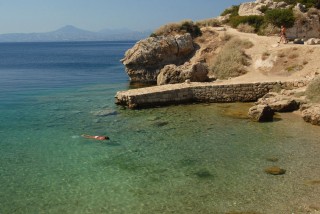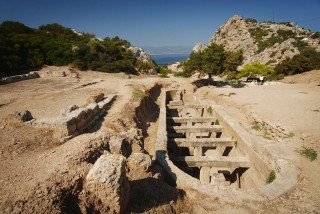
 The Heraion of Perachora sanctuary is one of the rare cases in which sea and archeology come together perfectly. There are not many places where you can go for a swim in the middle of an archaeological site. And to make this destination even more interesting is the fact that just two kilometers away, an open space on the shore of Lake Vouliagmeni, is a perfect stopover for the night.
The Heraion of Perachora sanctuary is one of the rare cases in which sea and archeology come together perfectly. There are not many places where you can go for a swim in the middle of an archaeological site. And to make this destination even more interesting is the fact that just two kilometers away, an open space on the shore of Lake Vouliagmeni, is a perfect stopover for the night.
[sam id=”7″]
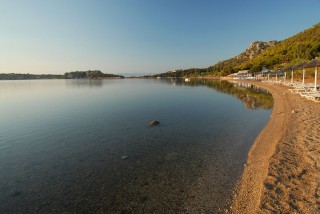
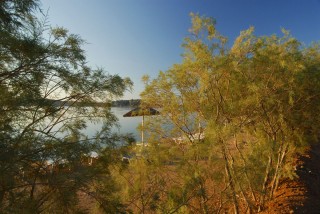
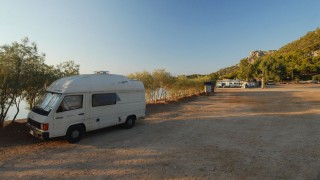 Lake Vouliagmeni, despite the name, is not a real lake. Actually the water basin is connected to the sea by a narrow gap on the south side and it seems to have been a sinking of the ground to create this ‘fake’ lake, it is no coincidence that vouliagmeni in greek means ‘sunk’. Crystal clear, shallow and warm water. If it were not for the pebbles that hurt your feet… Near the taverna (Lintos) there is a shower, not great to look at, but working fine. I found the owners of the taverna pretty rude and prices a little exaggerated, next taverna (Glikofridis) is much better and less of a tourist trap. The open space can accommodate dozens of campers and most fortunates can park a few meters from the sea. The only downside is that there is not plenty of shade.
Lake Vouliagmeni, despite the name, is not a real lake. Actually the water basin is connected to the sea by a narrow gap on the south side and it seems to have been a sinking of the ground to create this ‘fake’ lake, it is no coincidence that vouliagmeni in greek means ‘sunk’. Crystal clear, shallow and warm water. If it were not for the pebbles that hurt your feet… Near the taverna (Lintos) there is a shower, not great to look at, but working fine. I found the owners of the taverna pretty rude and prices a little exaggerated, next taverna (Glikofridis) is much better and less of a tourist trap. The open space can accommodate dozens of campers and most fortunates can park a few meters from the sea. The only downside is that there is not plenty of shade.
GPS Coordinates:
N 38.032429
E 22.873328
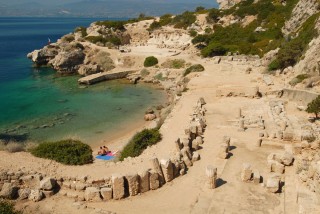
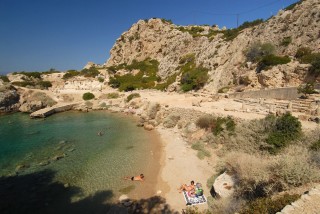 The Heraion sanctuary is located two kilometers north and is not fenced. The location is spectacular and right in the middle of the site there is a small beach, but big enough to enjoy at the most the place. The rocks around offer different natural platforms for a couple of dives!
The Heraion sanctuary is located two kilometers north and is not fenced. The location is spectacular and right in the middle of the site there is a small beach, but big enough to enjoy at the most the place. The rocks around offer different natural platforms for a couple of dives!
In the parking lot there are two chemical toilets.
Coordinate GPS:
N 38.028884
E 22.853177
| Info Box |
|
[sam id=”7″]

